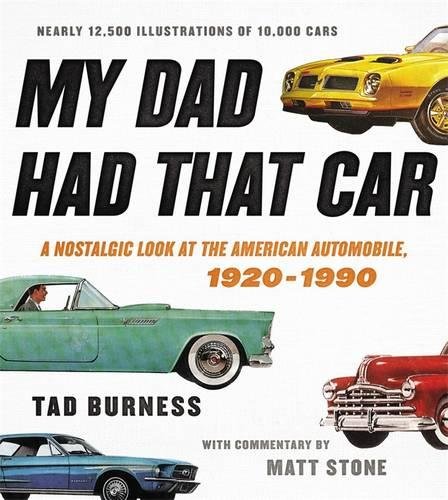
This one-of-a-kind, massive illustrated history of more than 10,000 American automobiles is perfect for the millions of classic car enthusiasts.
With more than 1,300 pages and 12,500 illustrations covering 70 years, this may be the most complete visual history of the American automobile ever published. Nowhere else are there so many collector, luxury, sporting and every day cars assembled with fascinating information about original prices, engine sizes, horsepower, and other specifications. The pages are packed with genuine, factory-fresh photographs and drawings taken from contemporary advertisements, catalogs, and brochures.
More than 250 manufacturers and hundreds of individual models trace the evolution of the American automobile, from the millions of Model Ts that rolled off Ford’s assembly line through the art deco streamliners of the ’30s, to the tail-finned land yachts of the ’50s and muscle cars of the ’60s and ’70s up to the early SUVs of the ’90s. Throughout author Tad Burness adds handwritten details not found anywhere else, including pointing out unusual options and differences found within a model. Automotive journalist Matt Stone provides a new general introduction and one to each era within the book.
John H. McKane
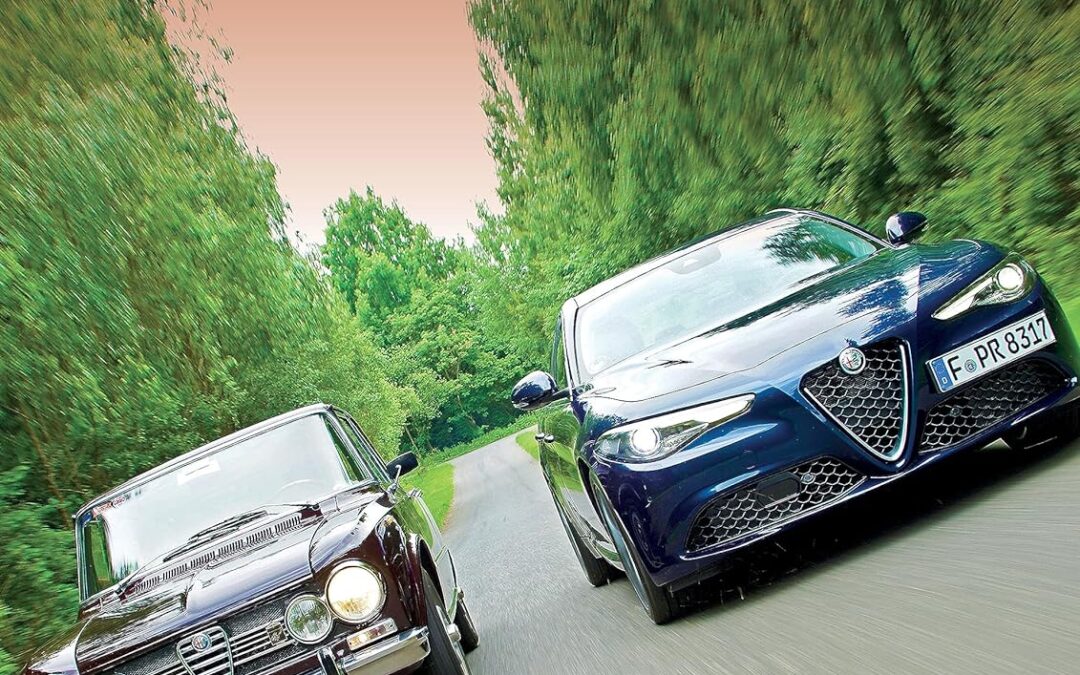
A complete history of 110 years of Alfa Romeo, the cars, the people, the racing, and the heritage.
For more than 110 years, Alfa Romeo has set the standard for elegant, sophisticated, and racy Italian automobiles. The first Alfa Romeo, the Tipo 24HP, rolled off the line in 1910 and paved the way for such classic and well-known models as the Tipo 33 Stradale, Guilia, Giulietta, Alfasud, Alfetta, and Stelvio—Alfa Romeo’s first SUV. And this comprehensive book covers them all and much more.
Automotive writer and Alfa Romeo buff Christian Schön celebrates the 110th anniversary of Alfa Romeo by taking a deep dive into the people, places, races, and especially the cars that are part of Alfa Romeo’s rich history and heritage. The book includes
• a thorough timeline of all the important events and milestones in Alfa Romeo’s 110-year history, 1910–2020;
• special sections on Alfa Romeo’s auto designs, engines, technology, concept cars, factories, and advertising, as well as the Alfa Romeo Museum in Milan and the key personnel responsible for Alfa Romeo’s rise to the top;
• an in-depth look at Alfa Romeo’s racing history, including five world championship titles, a dozen European championships, 11 victories in the legendary Mille Miglia endurance race, and a victory in the German Touring Car Championship (DTM); and
• exciting “behind the scenes” stories and more than 350 color and black-and-white images.
Anyone with a passion for Alfa Romeo—or automotive history, design, and racing in general—will find excitement in these pages. The book is a must-have for any automotive library.
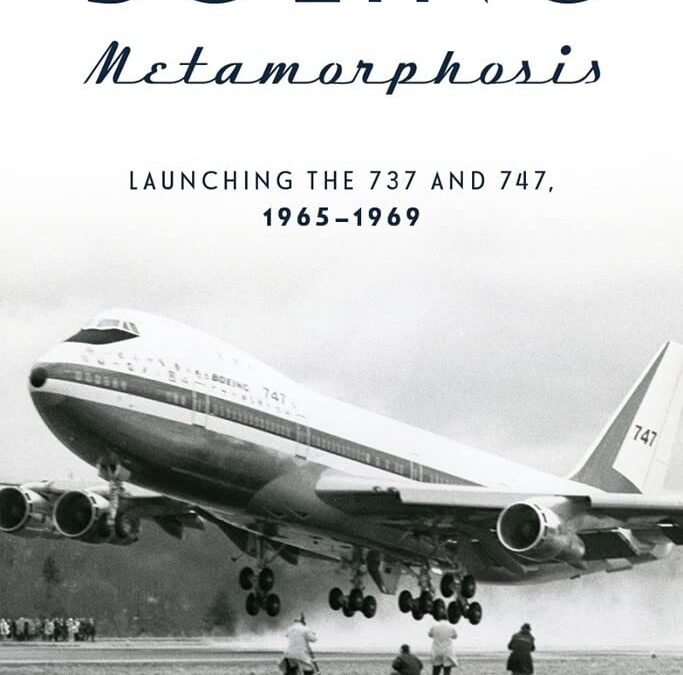
A unique insider look at the profound changes Boeing experienced in the 1960s as the product mix shifted from military hardware to the first generation of jet-powered airliners.
Welcome to the world of corporate decision-making, workplace gambles, and a myriad of human interactions. This is a story that affirms the traditional values of hard work, fidelity, and building the human alliances necessary for achieving enduring success. John Andrew, a retired Boeing executive, offers a unique insider perspective of the changes Boeing experienced in the 1960s.
- The requirement for more factory space was fueled by new models and a surging worldwide demand for air travel.
- Massive construction projects were launched, including a newly constructed 747-sized factory on 760 acres at Paine Field in Everett, Washington.
- These cathedrals of airframe assembly remain vital to Boeing’s ongoing operations today.
- More than 130 color and black-and-white images.
Explore the amazing growth and evolution of Boeing, one of the giants of aviation.

In the late 1970s, the problem facing any manufacturer taking part in the World Rally Championship was that the rules kept being changed at short notice. This book looks at the solutions found for Lancia’s rally car, the 037, and takes the reader through the new rules that all potential contenders would have to consider if they wanted to win rallies at World Championship level.
Lancia’s Rally was developed quickly to deal with the then-dominant Audi Quattro. The reasons it succeeded are featured here, along with an in-depth, behind-closed-doors look at the development of the car, with the close help and cooperation of its designer and chief engineer, Ing. Sergio Limone.
Here you can read how he decided on the basic configuration of the car, what the rules would allow, and how the project unfolded in total secret at Fiat’s various test tracks and centres in and around Turin, overlaid with rumour and counter-rumour as the world’s motoring press tried to make sense of what little knowledge it had of the project’s progress. In addition, Ing. Limone’s own photographs from areas never accessed by the public tell their own story. The focus then moves to the world of top-level rallying, with all the associated glory and headaches. Accompanied by stunning photography and insights from team members, we follow the small and nimble 037s, as the cars have become popularly known, as they head out to take the World Rally Championship for Makes in 1983 and innumerable wins throughout the world. In addition, there are tests of various key examples of the cars, and appendices of events and chassis used. This book is illustrated with 250 stunning and rare rally action photos.
Veloce Classic Re-Prtint
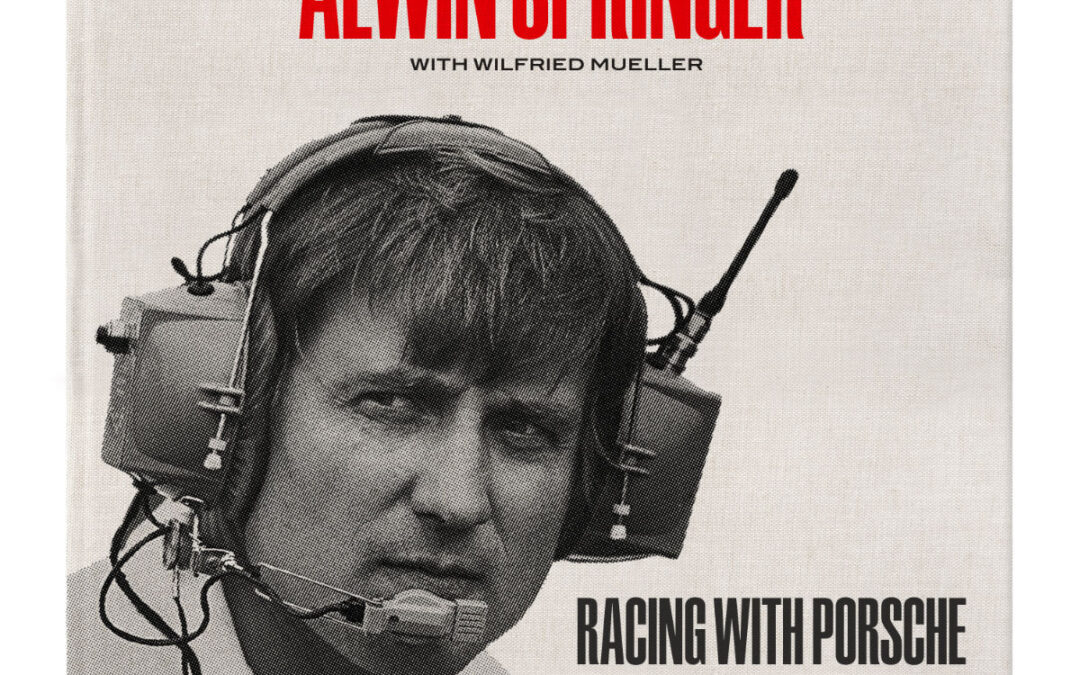
Growing up in the Ruhr area of Germany, Springer emigrated to Canada in the 1960s, but soon settled in California due to the warmer weather. There, after further improving his skills, the trained car mechanic/electrician found a job with Porsche specialist Vasek Polak and from then on looked after Polak’s Can-Am race cars as a mechanic.
Later, Springer started his own venture Andial with former Polak colleagues Arnold Wagner and Dieter Inzenhofer. The now-legendary tuning company went on to compete successfully in IMSA and, with the Andial engines, enjoyed quite a bit of success in other racing series as well. Andial became the number one address for Porsche customers in the USA, and even at Le Mans, customers of the German marque started using Andial engines. The secret of the California-based German trio: they had entrusted a capable man in Silicon Valley with the task of decoding the engine control system of the Porsche factory and thus making all parameters freely adjustable. Alwin Springer and his team perfected their set-ups in hours of test-bench runs. Morever, Springer also had a key role in the relaunch of Porsche Motorsport North America at the end of 1989 and is still active as a consultant for PMNA today.
Alwin Springer, together with Wilfried Müller, summarises his experiences from Can-Am, IMSA and the modern era at PMNA in 47 entertaining chapters, accompanied by countless photos from his private collection dating back to his early years with Vasek Polak.
Hardcover with slipcase
Limited to 963 copies, individually numbered

The first efforts of man to fly were limited by his ability to generate sufficient power to lift a heavier-than-air machine off the ground. Propulsion and thrust have therefore been the most fundamental elements in the development of aircraft engines.
From the simple propellers of the first airliners of the 1920s and 1930s, to the turboprops and turbojets of the modern era, the engines used in airliners have undergone dramatic development over a century of remarkable change. These advances are examined in detail by aeronautical engineer and author Reiner Decher, who provides a layman’s guide to the engines that have, and continue to, power the aircraft which carry millions of travelers across millions of miles each year.
Reiner Decher also looks at the development of aero engines during the Second World War and how that conflict drove innovation. He also explains the nature of wing design and how they provide lift and of the considerations of airflow over their surfaces, from the early days of the twentieth century to the present.
To enable an easy understanding of this intriguing subject, Powering the World’s Airliners is profusely illustrated, transporting readers back to the time of each major development and introducing them to the key individuals of the aero industry in each era.
After reading this comprehensive yet engaging story of the machines that power the aircraft in which we fly, no journey will ever seem quite the same again.
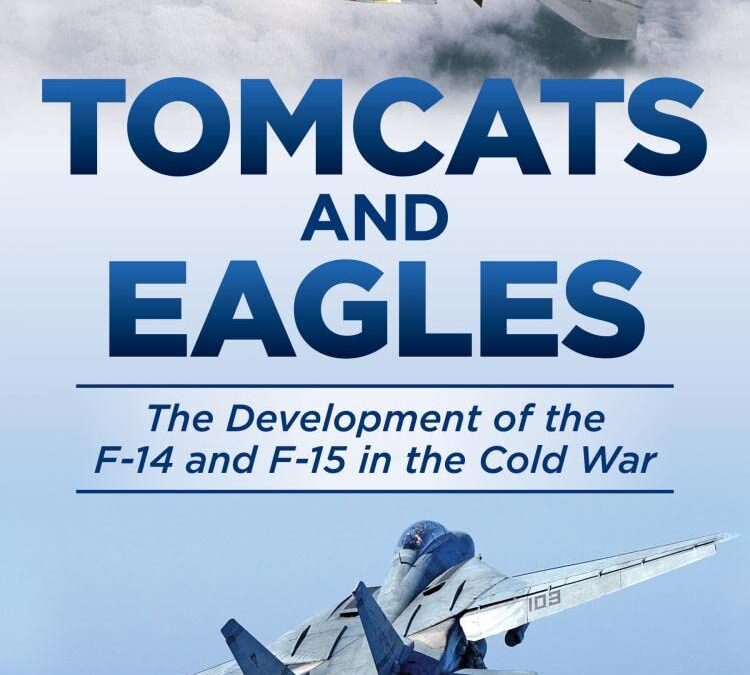
During the first half of the 1970s, two new fighter aircraft entered operational service in the United States: The Navy’s Grumman F-14 Tomcat and the Air Force’s McDonnell Douglas F-15 Eagle. These two aircraft were part of the backbone of the tactical air power of the United States; their introduction was accompanied by comprehensive reforms in pilot training as well as new technologies and weapon systems. In addition to the tactical significance of the two aircraft as innovative fighting platforms, however, their development and deployment should be viewed within a broad geopolitical and geostrategic context. Tovy explains how the F-14 Tomcat and the F-15 Eagle were an integral part of the aerial component of the conventional arms race within the Cold War. He argues that the trend of Soviet advanced weapon systems development created a perception of threat to the United States, challenging its conventional military power. Tomcats and Eagles explores how the Vietnam War accelerated the need for advanced fighter-interceptors, and that the lessons learned from aerial combat in Vietnam had a significant impact on the design and operational characteristics of the F-15. The author reveals that after F-14s were sold to Iran and F-15s to Israel in the second half of the 1970s, these jets were integrated into their armed forces, leading to Israel’s use of the F-15 during the First Lebanese War. Finally, the author provides an in-depth look at the operation of the F-14 and F-15 in U.S. actions in Southeast Asia, beginning with the Tanker Wars in the mid-1980s, through Operation Desert Storm and Operation Enduring Freedom, and ending with Operation Iraqi Freedom.
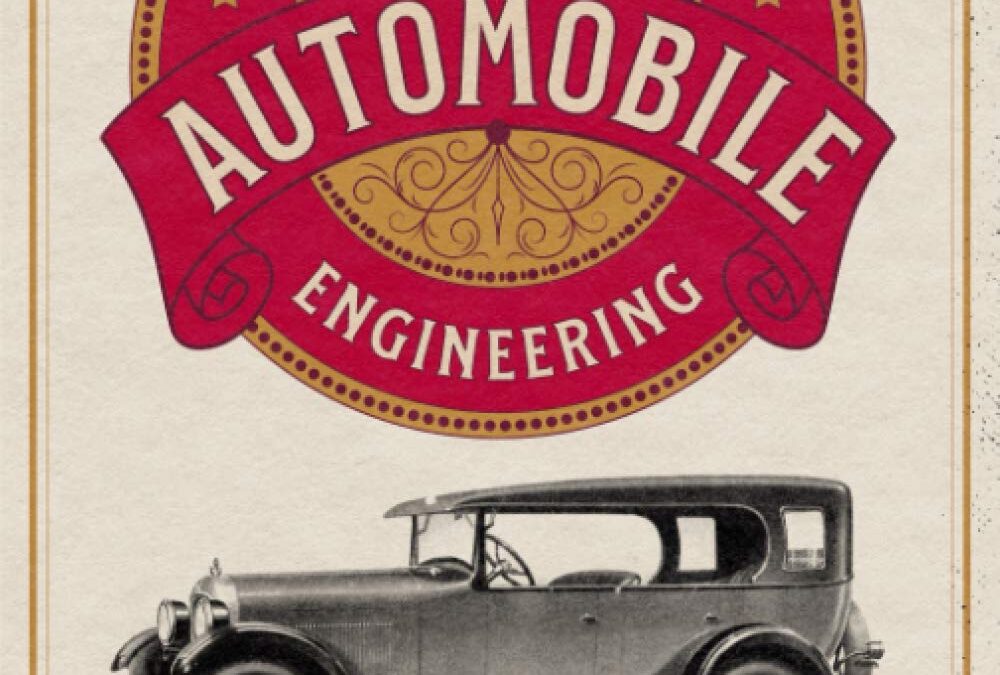
Volume 5 concludes the in-depth five-part series with detailed antique car wiring diagrams, data sheets, and a thorough look at classic electrical systems.
The Classic Cars and Automobile Engineering series spans five volumes with more than 1500 images and diagrams for enthusiasts, collectors, and mechanics. Volume 5 includes:
– Digitally restored images and diagrams
– Big 7” x 10” pages
– Easy to read writing style
– Author’s original page layouts
– Classic type font and hand-drawn lettering
– Bold retro-style cover
Everything that you ever wanted to know about the inner workings of antique cars, trucks, bikes, engines, tractors and more are included in this expansive tome of knowledge. Originally printed in 1926, this vast wealth of knowledge for classic car lovers was digitally restored and enhanced by writer-historian Mark Bussler and the CGR Publishing Restoration Workshop for a new generation of automobile enthusiasts.
This detailed, illustrated book collection is a must-have reference guide for all owners of period automobiles, motorcycles, airplanes, and anything powered by early 20th-century engines. Enlarged and printed on large 7” by 10” pages, The Classic Cars and Automobile Engineering series is designed for easy reading in the shop or library. Volume 5 focuses on electrical systems, wiring diagrams and data sheets.
Included subjects: How to read wiring diagrams – symbols – charts – generators – lamp voltages – dimming devices – electric horns – ignition timing – spark plugs – distributors – currents – methods of regulation – proper conduction – hydrometer tests – low battery – electric gear shifts – and more.
Includes wiring diagrams and datasheets for Apperson, Buick, Cadillac, Case, Chalmers, Chandler, Chevrolet, Chrysler, Cleveland, Cole, Cunningham, Davis, Dodge, Dort, Duesenberg, Durant, Essex, Ford, Flint, Franklin, Gardner, Gray, Haynes, Hudson, Hupmobile, Jackson, Jewett, Jordan, Kissel, LaFayette, Lexington, Lincoln, Marmon, Maxwell, Mercer, Moon, Nash, National, Oakland, Oldsmobile, Overland, Package, Paige, Peerless, Pierce-Arrow, Rco, Rickenbacker, Rollin, Rolls-Royce, R&V Knight, Star, Stephens, Studebaker, Stutz, Wills Sainte Claire, Willys-Knight, and Winton.
Table of contents:
– Chapter 1: Reading Wiring Diagrams and Auxiliary Electrical Equipment
– Chapter 2: Wiring Diagrams and Data Sheets
– Chapter 3: Summary of Electrical Principles
– Chapter 4: Ignition Instructions
– Chapter 5: Generators
– Chapter 6: Wiring Systems
– Chapter 7: Battery
– Chapter 8: Glossary of Automobile Terms
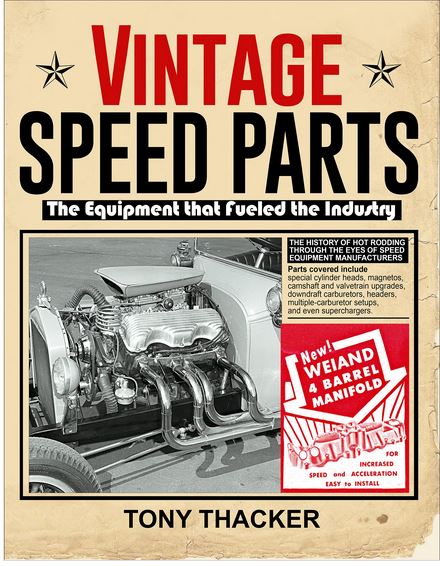
Follow the history of hot rodding through this nostalgic look at vintage speed equipment.
When most people think of speed parts, they rewind a few decades and think back to the Ford flatheads that were so prevalent in the 1940s and 1950s. However, did you know that the speed parts industry began way back in the Model T era? It’s true. As soon as vehicles were mass produced, manufacturers were looking for ways to make them faster. Manufacturers, such as Roof, Rajo, Winfield, Miller, Frontenac, and Holley, made speed parts for 4-cylinder Model T engines and accomplished speeds of up to 100 mph!
In Vintage Speed Parts: The Equipment That Fueled the Industry, veteran hot rod historian Tony Thacker looks at the history of hot rodding through the eyes of speed equipment manufacturers. Covered chronologically, the book begins with the early 4-cylinder engines. In 1932, Henry Ford introduced the flathead V-8, which was slow to be adopted as the engine of choice in racing until the parts industry caught up. Once it did, the flathead, although interrupted by the war, was the engine to run until the automobile manufacturers introduced overhead-valve V-8 engines in the late 1940s. Chrysler’s early-1950s Hemi and Chevrolet’s small-block V-8 in 1955 spelled the end for the flattie. Both mills dominated well into the 1970s, and the speed industry was there to support all platforms in spades. During that period, every auto manufacturer made a V-8 worthy of modification, and the speed industry boomed. Eventually, the speed equipment manufacturers grew to the point of becoming corporate entities, as mergers and acquisitions became the much less interesting story.
Parts covered include special cylinder heads, magnetos, camshaft and valvetrain upgrades, downdraft carburetors, headers, multiple-carburetor setups, and even superchargers. Everyone figured out how to make engines more powerful, upgrading with the type of parts that were being produced decades later, even to today. Join in the fun of reviewing the history of speed through this fascinating tale of vintage speed parts.

A pathbreaking history of the regulatory foundations of America’s twentieth-century aerial preeminence.
Today, the federal government possesses unparalleled authority over the atmosphere of the United States. Yet when the Wright Brothers inaugurated the air age on December 17, 1903, the sky was an unregulated frontier. As increasing numbers of aircraft threatened public safety in subsequent decades and World War I accentuated national security concerns about aviation, the need for government intervention became increasingly apparent. But where did authority over the airplane reside within America’s federalist system? And what should US policy look like for a device that could readily travel over physical barriers and political borders?
In Sovereign Skies, Sean Seyer provides a radically new understanding of the origins of American aviation policy in the first decades of the twentieth century. Drawing on the concept of mental models from cognitive science, regime theory from political science, and extensive archival sources, Seyer situates the development, spread, and institutionalization of a distinct American regulatory idea within its proper international context. He illustrates how a relatively small group of bureaucrats, military officers, industry leaders, and engineers drew upon previous regulatory schemes and international principles in their struggle to define government’s relationship to the airplane. In so doing, he challenges the current domestic-centered narrative within the literature and delineates the central role of the airplane in the reinterpretation of federal power under the commerce clause.
By placing the origins of aviation policy within a broader transnational context, Sovereign Skies highlights the influence of global regimes on US policy and demonstrates the need for continued engagement in world affairs. Filling a major gap in the historiography of aviation, it will be of interest to readers of aviation, diplomatic, and legal history, as well as regulatory policy and American political development.
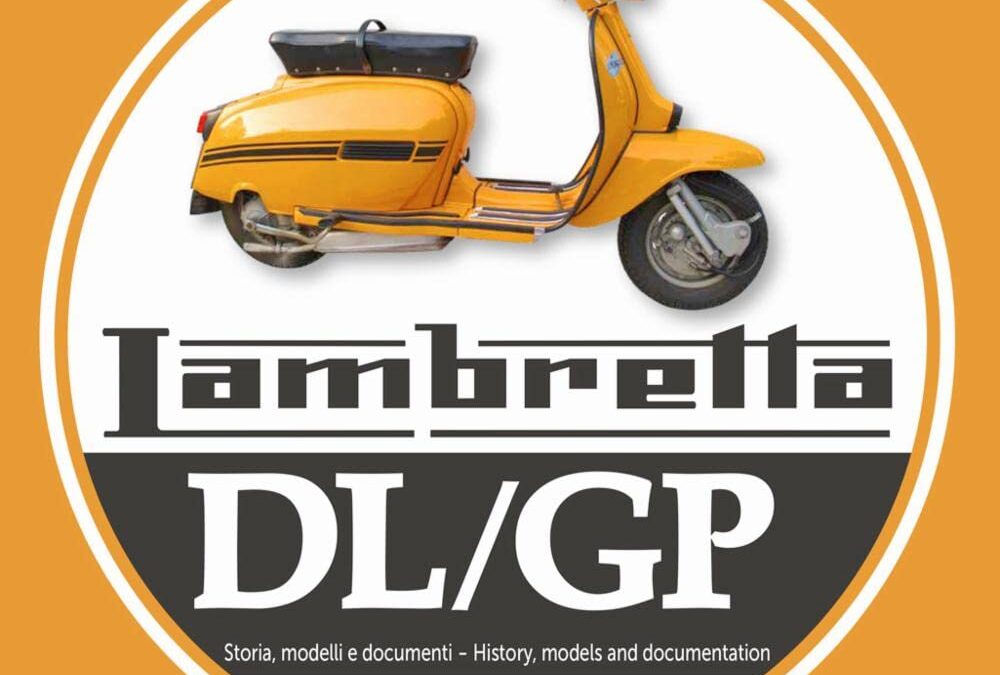
he fascinating story of the Milanese scooter par excellence concluded with the Lambretta DL-GP series.
This book looks at all aspects of this special scooter: its history, its technical evolution, its sporting victories, with a specific chapter devoted to the British market, which more than any other took the DL to its heart and still today considers it to be the pinnacle of Innocenti’s production.
The last model produced by Innocenti had been developed at the famous Bertone design centre in Turin which, with a few but substantial modifications managed to breathe new life into the Lambretta, making it even more sporting and elegant, sophisticated and modern. With a curious black splash on the leg shield, the new model soon became a best-seller on the crowded international scooter market.
It enjoyed enormous success in Great Britain, being transformed into a cult object for the most sporting and demanding scooterists. More than fifty years after its launch, its styling is still modern and the model is still very popular with scooterists all over the world.
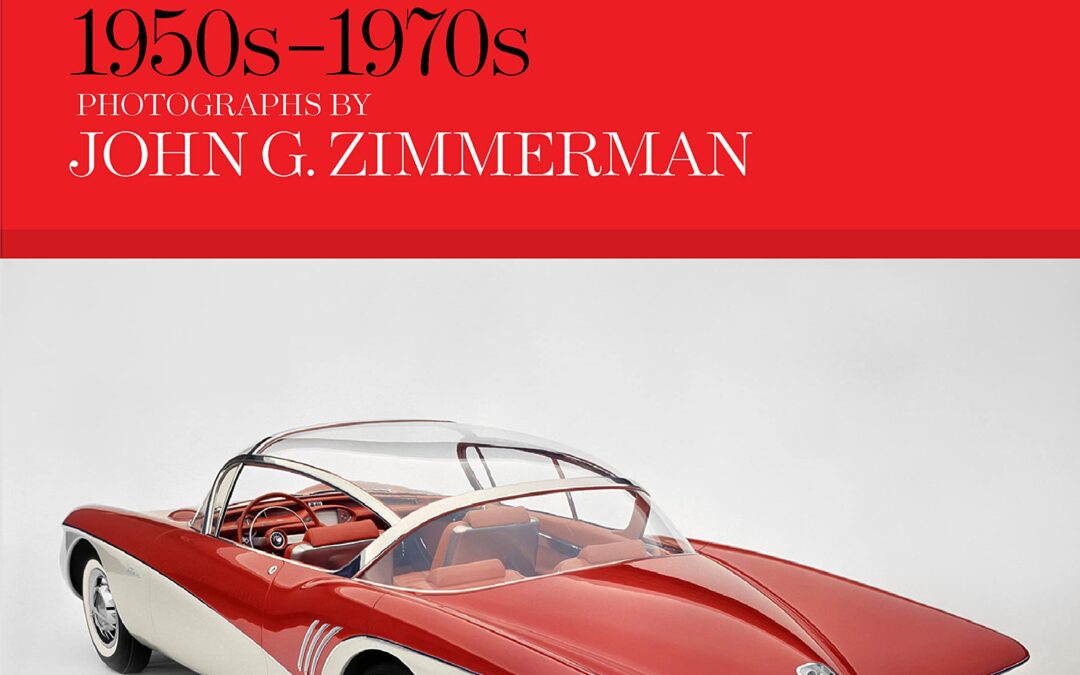
A glorious and nostalgic celebration of a defining period in American car culture—the 1950s to the 1970s, the golden age of Detroit’s icons of the road—when automobile design was at its peak and the car itself was synonymous with a vision of success in America.
Auto America offers a compelling look at three decades (the 1950s, ’60s, and ’70s) of America’s fascination with the automobile. At a time when self-driving vehicles and climate change are transforming driving around the world, John G. Zimmerman’s pictures capture the optimism and even utopianism of a beloved period in American car culture.
Many of Zimmerman’s photographs were originally taken for Life, Time, and Sports Illustrated magazines and highlight diverse aspects of America’s auto industry at its zenith; they feature not only iconic cars of the era, which Zimmerman chronicled comprehensively at car shows and in studio assignments throughout the period, but also a behind-the-scenes look at the people who designed, built, collected, exhibited, and raced them.
With more than 200 photographs and drawing on the John G. Zimmerman Archive’s collection—including his best-known photographs of Fords, Chryslers, and GMs in their heyday alongside ephemera, tear sheets, and outtakes from his assignments—the book celebrates the automobile’s central place in American culture during those decades when the timeless silhouettes of classic cars ruled the roads.

Pre-order now for early 2023 delivery
Can-Am! The words are still magic to a generation of road racing fans to whom the Canadian-American Challenge Cup series represents the pinnacle of the sport they love. And who is to argue? Taking over from the USRRC (United States Road Racing Championship), as the feature sports car circuit in North America, from 1966 through 1974 the world’s best drivers and the world’s best racing teams put together cars that followed the rule of the Can-Am series: no rules! Anything went, as long as it had two seats and enclosed wheels. These “rules” set the stage for years of ground-and-pulse-pounding cars powered by bigger and bigger engines and daredevil drivers competing in front of motorsport’s biggest crowds. Years later the names still carry weight: drivers like Dennis Hulme, Bruce McLaren, Dan Gurney, Jackie Stewart, Mark Donohue, George Follmer. And what cars: McLaren, Lola, Porsche, Ferrari, and Shadow. But who was behind those awesome machines and drivers? Who could keep them going when the torque shook loose engine bolts? Who could spend an entire low-paid off season in small, cold and drafty race shops looking for an extra edge in performance and reliability? Who could toil in uncomplaining anonymity behind the scenes while the cars and their drivers basked in the considerable glory that went with Can-Am racing? The men portrayed in One Last Turn.
One Last Turn presents the first look at the men (and in those days they were all men, young men) who made it all work. The mechanics who towed the mighty cars on pick-up trucks and worked on them between races and between heats in the blazing sun and pouring rain on muddy grassy fields, who drove 90 miles per hour on the era’s two lane roads, towing a 2000 pound race car to make the next race’s starting grid.
Illustrated with many never before seen photos of the cars and people who made Can-Am great, this is the book that fans of the series have been waiting for.
The men who kept the machines on the track during the Can-Am years
Hilarious and poignant never-before told stories behind the scenes during the Can-Am years.
- Hard cover with dust jacket

There’s really nothing quite like the freedom of the open road. And there’s nowhere on the planet more thrilling to traverse by car than the United States, a country that in many ways is the birthplace of the modern road trip. As more and more travelers are looking to reduce their reliance on flying, The Great American Road Trip is about seeing the world on wheels, not wings. This book is about both the iconic routes and the roads less traveled, crossing barren deserts, otherworldly canyons, snowy mountains, and dramatic prairies – all without crossing a border. From the bourbon trail in the south to retracing the underground railroad, each route in this book has a story to tell.
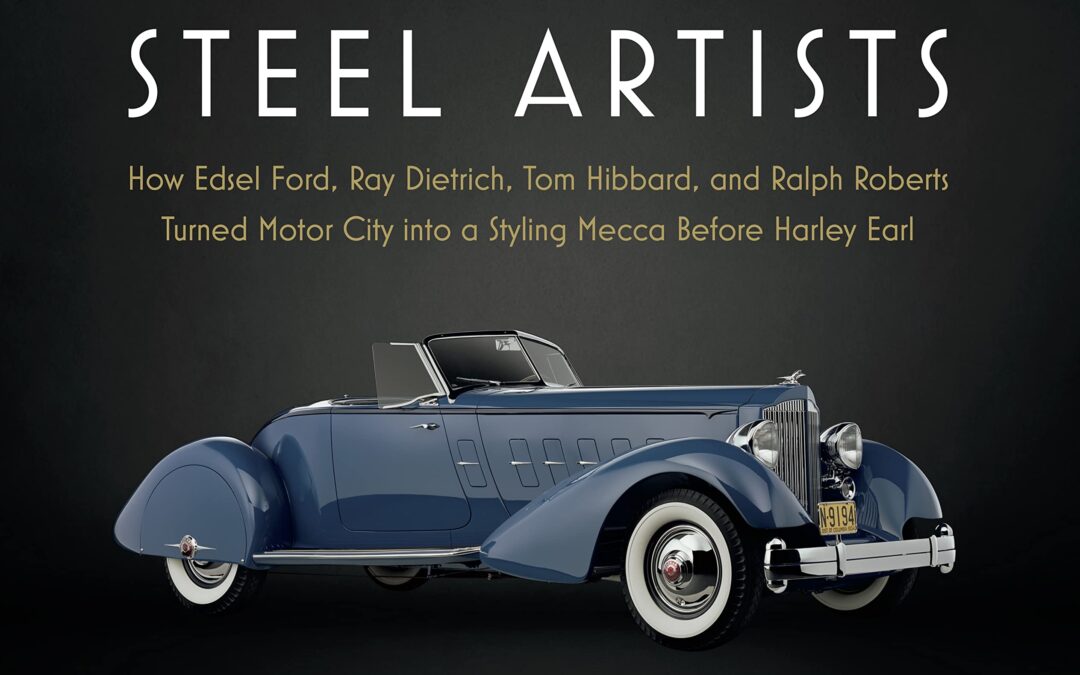
A groundbreaking book on how automotive styling was born, the artists who made it happen, and how Motor City was changed forever.
Printed in a large 12″ x 12″ format with 296 hardbound pages, Detroit Steel Artists is the first comprehensive story about the avant-garde artists of the automotive business—the industries’ outcasts who changed Motor City forever and made styling an important selling point in the early 1920s.
Styling is a given today for selling cars. How did that come to be? Societal changes, including the modernization of business and the women’s movement, were powerful factors for styling’s rise in significance. The forward-looking semi-custom car designs, from companies such as Le Baron and Dietrich, became a key strategy for styling’s acceptance in Detroit for production cars—before Harley Earl.
Inspired by Edsel Ford’s vision, Ray Dietrich, Tom Hibbard, and Ralph Roberts battled with engineers and executives in drafting rooms and board rooms over design. Packed with lively first-person stories supported by extensive research, Detroit Steel Artists relates the successes and failures of these fascinating pioneering steel artists. With more than a hundred period and modern images, Detroit Steel Artists takes readers on a panoramic tour of some of the most beautiful cars of the Classic Car Era—the zenith of automotive design.
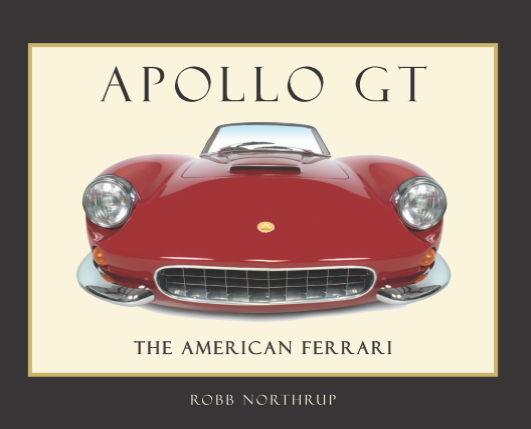
‘If a Buick Special ever got a fierce ambition to become a Ferrari – and tried hard enough – it would be likely to end up just about like this.”
Car and Driver magazine – September, 1963
Such prophetic words from Car and Driver magazine back in 1963 underscore the goal of three California twenty somethings who sought to build a world-class grand touring sports car. And, for a while, found themselves on equal ground with Europe’s best.
Their concept: A marriage of Italian style and the mechanical excellence of a premier American manufacturer – Buick – to create a true gran turismo sports car with head-turning looks, outstanding performance and comfort, and something that, up to then, was not common among European exotics: Reliability!
Their challenges were legion: A complex product combining hand-crafted bodies with mass-produced engines and transmissions on an assembly line spanning two continents and an ocean. A limited capability for product development and testing. And the need to create a marketing program to promote the car to an enthusiast public as well as develop a distribution channel to get the car into their hands. All this with limited operating capital.
The result? The Apollo was highly praised by both road testers and owners alike. “Workmanship is of the highest quality…comparable to cars costing twice that of the Apollo” crowed one magazine report. “…the Apollo handles as well or better than a 2+2 Ferrari, an Aston Martin DB4 or a Sting Ray Corvette,” exclaimed another. High praise indeed from the critical press!
And the owners? “I dearly love my Apollo!” enthused singer Pat Boone. And this from another owner: “It’s a wonderful work of art. You can see the quality. You can feel the excitement they felt when they were hammering it out, putting it together and driving it for the first time. It is a milestone, a one-of-a-kind car and no one can really compare anything to it. It stands on its own.”
This is the story of the Apollo GT. The American Ferrari.
Details: 8.5″ x 11″, 138 pages. 87 color and black & white photos and illustrations.
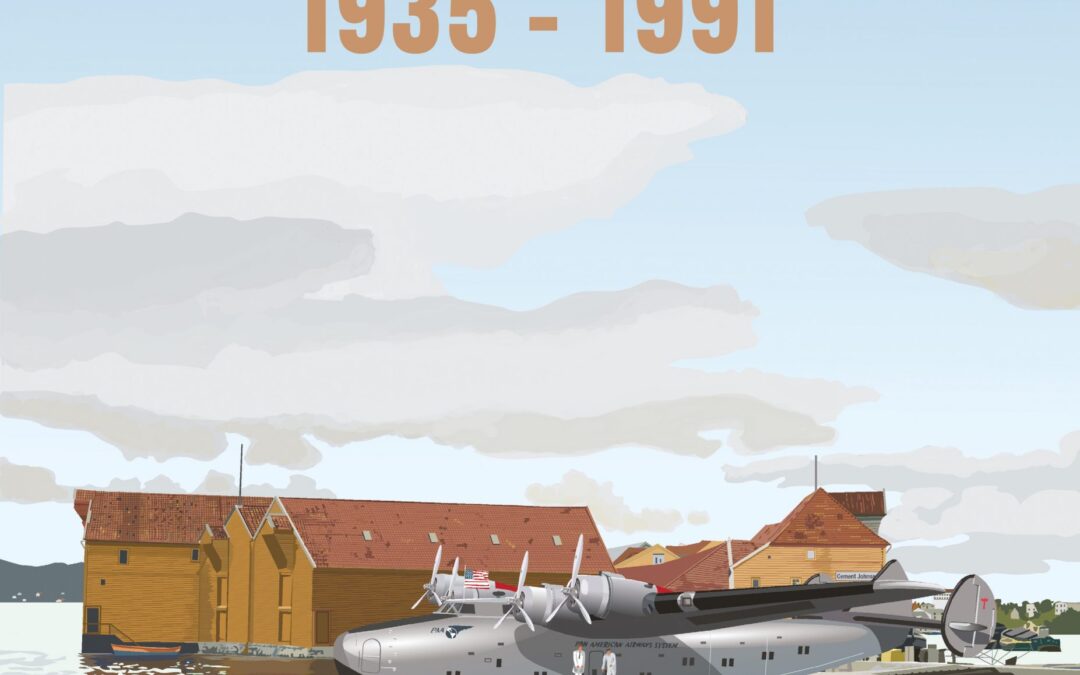
A softback book of 76 pages about the trials to open an air service between Norway and the USA. One’s the world’s largest airlines with a network spanning the world: Pan American Airways. The history of this airline is without doubt very interesting. A service to the small country of Norway was just one of the air services operated, but generated some 30,000 to 50,000 passengers per year. In this special magazine, we take a look at the history of Pan American World Airways and its routes to Norway.
How diverse its history is can be understood, when we ask you the following question: when was the first air service to be inaugurated: 1936? 1940? 1946? You might be interested to know that Pan American Airways as early as the 1936 wanted to start a trial service and in 1940 actually an air service, but it had to wait until after the Second World War. Its fascinating story is told here, all the way until the end in 1991.
The author describes the intense conversation between the Nordic airline companies and Pan American Airways before the war and gives a historic detailed description of the post-war development, including many photographs, timetables, posters and advertisments from that time. Pages are dedicated to marketing and sales, the Oslo office and its two most well-known directors: Derek L Blix and Berit Sjølund. A final chapter describes the work of the World Wings International, the Norwegian Chapter, the association of former Pan Am stewardesses. The softback magazine includes a beautiful painting of the Norwegian Sikorsky S-43, LN-DAG “Valkyrien”. Plenty to read and look at.
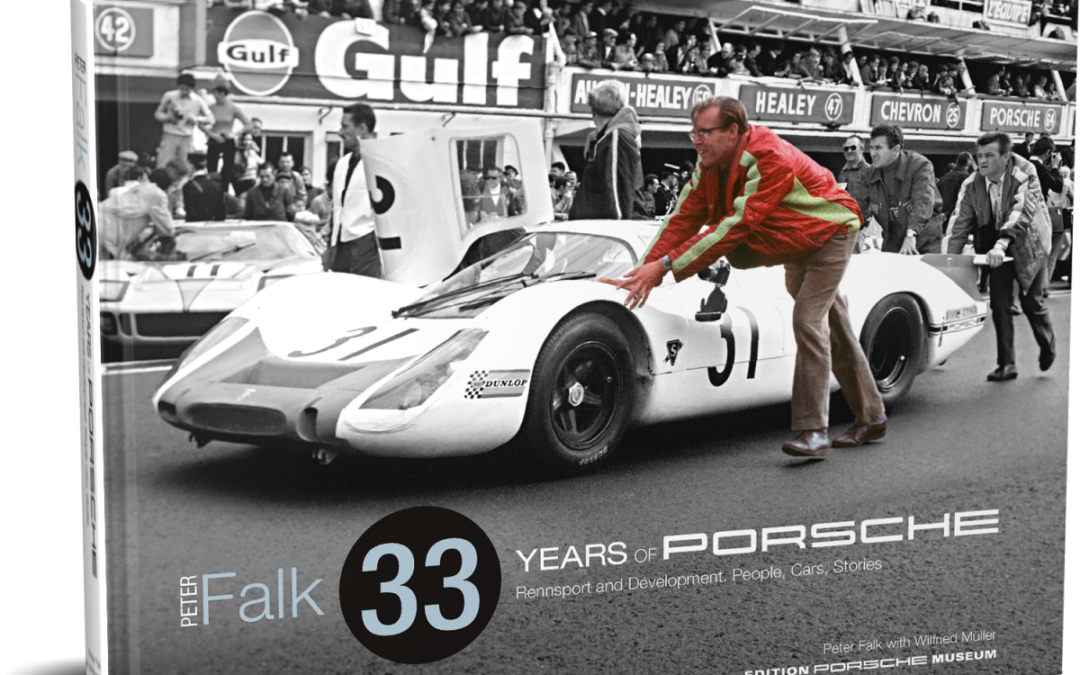
This edition of the book is limited to only 150 numbered copies, contains a hand signature of Peter Falk and comes in a luxury linen slip case.
Peter Falk and Porsche, 33 years of passion and devotion: As their race director and one of the leading figures in their experimental department, Peter Falk contributed significantly to the character of the sports cars from Stuttgart-Zuffenhausen – both on the race track and on the road.
From the first 901 right through to the very last air-cooled Type 993, every Porsche 911 bears the signature of Peter Falk. He joined the company in 1959 and quickly rose through the ranks to head various testing departments. In the mid-sixties, Falk also took over the tactical and technical leadership of the factory’s “Rennsport” team. In 1981, he was appointed as race director and led Porsche throughout its most successful era of competition. “His” team won at Le Mans, became World Sports Car Champions, conquered the Paris-Dakar Rally, and was victorious in Formula 1 with the TAG Turbo engine.
In this book, Peter Falk tells of his years with Porsche. A highly respected person in the world of engineering, he relates how it all began at Porsche – when race drivers and engineers huddled together in a shepherd’s hut at Weissach to discuss suspensions, what the Porsche crew experienced during endless testing adventures in both the Arctic Circle and the Sahara, how the race cars at Le Mans roared to the start over country roads, and how a test drive with a Porsche 908 almost cost him his life. He shares his views on every Porsche race car, from the 904 Carrera GTS to the 962C, and describes the race drivers who competed during his reign: Hans Herrmann, Jacky Ickx, Vic Elford, Derek Bell, Hans-Joachim Stuck and Jochen Mass to name just a few. Falk provides a good, long look into the inner workings of Porsche.
Peter Falk shared his personal Porsche stories and fascinating insights with the author Wilfried Müller. The images in this book come from Peter Falk’s private collection, from the Porsche Historical Archive in Stuttgart-Zuffenhausen, and from the vast cache at McKlein Photography. Along with the contributions from former colleagues and race drivers, these images and stories give an in-depth portrayal of Peter Falk’s 33 years with Porsche.

The Ford Maverick was a horse of a different color – four different colors, in fact. It was America’s first modern subcompact; as ‘The Simple Machine’ it combined rugged Ford durability with looks that belied its bargain basement starter sticker.
Secondly, the Maverick was an attainable junior supercar. When ponies got pricey, the Maverick Grabber stepped in to fight inflation. And if the Mustang had the Cougar as an upscale cousin, the Grabber could have the Comet GT as its partner in crime.
Indeed, it was in the third area of small car luxury, that Maverick LDO (Luxury Décor Option), and Mercury Comet with Custom Option, were truly innovative. Ford was the first domestic to break the previously accepted tenet that luxury went with size.
Still, all plush and no sport makes Henry a dull lad. In Super Stock and Pro Stock, the Ford Maverick was raced by Dyno Don Nicholson, Fast Eddie Schartman and Gapp & Roush to victory! Overall, the Ford Maverick was a winner on the track, and in the showroom. Thanks a couple of million Henry!
Marc Cranswick’s homage to the small US Fords of the 1970s is essential reading for all Maverick and Comet enthusiasts.





















